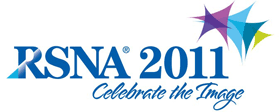
Abstract Archives of the RSNA, 2011
LL-VIS-TU2B
Radiofrequency Ablation Combined with Transcatheter Arterial Embolization with the Gelatin Sponge in the Rabbit Liver: Investigation of the Ablated Zone Extent according to the Time Interval between Two Therapies
Scientific Informal (Poster) Presentations
Presented on November 29, 2011
Presented as part of LL-VIS-TU: Vascular/Interventional
In Joon Lee MD, Presenter: Nothing to Disclose
Young Il Kim MD, Abstract Co-Author: Nothing to Disclose
Kyung Won Kim MD, Abstract Co-Author: Equipment support, Siemens AG
Donghyun Kim MD, Abstract Co-Author: Nothing to Disclose
Inseon Ryoo MD, Abstract Co-Author: Nothing to Disclose
Jin Wook Chung MD, Abstract Co-Author: Nothing to Disclose
To analyze the perfusion computed tomography (CT) indices, the ablated zone extent of the radiofrequency ablation (RFA), and the acute liver damage according to the time interval betwen transcatheter arterial embolication (TAE) and RFA, and ultimately to determine the optimum strategy of the combined therapy.
Fifteen rabbits were randomly divided into three groups which were treated with RFA alone (Group A), RFA immediatly after TAE (Group B), and RFA five days after TAE (Group C). All underwent the perfusion CT scanning immediately after RFA, and the perfusion indices were quantified through the color maps. To evaluate the acute liver damage, each rabbit underwent blood sampling four times; before the treatment, one day after RFA, five days after RFA, and ten days after RFA. They were euthanized ten days after RFA to obtain the pathological specimens. The volume on CT images, and the area, long diameter, and short diameter on the maximum cross-section of specimens were measured to analyze the ablated zone extent. Multiple regression analysis was used to evaluate the correlation between the ablated area and perfusion CT indices. The comparison of perfusion CT indices, ablated area, and liver function test among three experimental groups was performed by using the Kruskal-Wallis test and Mann-Whitney U test.
There was significantly inverse correlation between the maximum cross-sectional area of ablated zone and arterial liver perfusion (P = 0.007). The Group B showed the lowest indices for arterial liver perfusion and hepatic perfusion index among the three groups. The groups, rated from highest to lowest value, were Group B, Group C, and Group A in the all variables reflected the ablated zone extent. The Group B showed the most severe acute liver damage at the one day after RFA, but there was not a statistically significant difference among the all groups at ten days after RFA.
We believe that to produce the large therapeutic extent in the combined therapy, RFA should be performed immediately after TAE, as that is when the decrease of the arterial liver perfusion related to TAE is show the maximum. A future study for human application would be warranted.
This study could be the indirect evidence for the single session combination therapy, that is the performing RFA immediatly after TAE, in the treatment of the HCC.
Lee, I,
Kim, Y,
Kim, K,
Kim, D,
Ryoo, I,
Chung, J,
Radiofrequency Ablation Combined with Transcatheter Arterial Embolization with the Gelatin Sponge in the Rabbit Liver: Investigation of the Ablated Zone Extent according to the Time Interval between Two Therapies. Radiological Society of North America 2011 Scientific Assembly and Annual Meeting, November 26 - December 2, 2011 ,Chicago IL.
http://archive.rsna.org/2011/11007600.html

